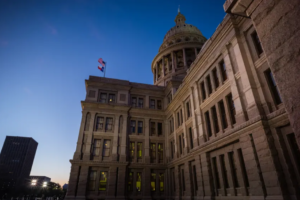Last fall, city Housing Authority carpenters performing work at a public housing complex in Washington Heights made a disturbing discovery inside a tenant’s bathroom: black splotches flowering on what appeared to be a newly installed drop ceiling.
When they removed the ceiling, they found a thick coating of toxic black mold festering in the rafters behind it and covering the backside of the sheetrock.
A subsequent investigation revealed that a contractor had put up drywall over mold and water leaks in multiple apartments at the development. The examination found open mold and leak repair requests in 45 apartments — fixes the contractor had failed to address.
Another problem: The contractor who performed the inadequate work was affiliated with the private-sector developer that was about to take over management of the public housing development under a controversial program NYCHA is relying on known as Rental Assistance Demonstration — aka, RAD.
Behind the scenes, the alleged mold cover-up set off alarm bells. An investigation by THE CITY confirmed NYCHA officials quietly altered the authority’s protocols on all RAD transitions going forward, ratcheting up oversight of all properties that convert to private management under the program.
From now on, NYCHA said it would ensure that developers preparing a building for RAD conversion use only mold-resistant sheetrock. The developers will be provided with an apartment’s mold history — and NYCHA will follow up to make sure open repair requests are addressed.
“Due to this investigation, NYCHA has instituted better controls to protect against any confusion surrounding (RAD) conversions,” NYCHA management wrote in response to THE CITY’s questions about the mold issue.
NYCHA has made no public announcement about any of this, and it’s easy to see why: RAD has become a hot-button issue confronting the Housing Authority as it attempts to redress a history of negligence and remedy unsafe and unhealthy living conditions that have plagued many of its 400,000 tenants for decades.
The Housing Authority is at a crossroads, of sorts. Its managers estimate $40 billion is needed to bring every apartment up to par, across more than 320 complexes housing more than 400,000 New Yorkers.
The agency is currently under the watchful eye of a federal monitor appointed after prosecutors documented mold infestations, lead poisoning of children, busted elevators in senior citizen buildings and rampant rat invasions in the nation’s biggest public housing system.
RAD — according to Mayor Bill de Blasio and the current NYCHA leadership — is a crucial weapon in the battle to fix what needs fixing.
Carpenters Blow Whistle
Under New York City’s version of RAD, a program developed during the Obama administration, NYCHA retains ownership of the actual properties but brings in the private sector to upgrade and then manage the buildings.
De Blasio plans to use RAD to fund $12.8 billion in “overdue repairs” in 62,000 of NYCHA’s 175,000 apartments by 2028 — about 35% of the entire city public housing system.
The transition to private management, he emphasized, will result in fixed-up units and NYCHA being better able to focus on the rest of its many unfinished tasks. About 9,500 units are now in RAD, with another 16,600 set to follow by the end of this year.
But a group of housing advocates and tenants called Fight For NYCHA has for the last two years repeatedly held protests and confronted NYCHA and de Blasio at public meetings — arguing that RAD is a wolf in sheep’s clothing that will turn public housing private.
A growing number of tenants and elected officials have also voiced concerns that RAD properties, though still technically owned by NYCHA, will not be properly maintained once private managers take over.
Precisely the scenario that some tenants feared came into play within the last few months in Upper Manhattan.
Last fall, NYCHA was planning to transfer management of some 1,700 apartments in 16 developments scattered around Manhattan to a joint venture called PACT Renaissance Collaborative, led by Monadnock Development LLC, a for-profit firm that specializes in building and managing affordable housing. NYCHA calls its RAD version Permanent Affordability Commitment Together, or PACT.
Announcing the selection of PACT Renaissance in June 2019, then-interim NYCHA Chair Kathryn Garcia, before her nearly successful bid for the Democratic mayoral nomination, promised the developers would install new kitchens, bathrooms and flooring in each apartment, plus fix up aging elevators and heating systems.
“Our residents deserve critical repairs to their homes as soon as possible,” she noted.
On the list for transfer to Monadnock’s management was Washington Heights Rehab, several tenements that fell into foreclosure in the 1970s and were taken over by NYCHA in the 1980s. As the years passed, NYCHA fell behind in maintenance and the condition of the development’s 382 units greatly deteriorated. By last year, most of the apartments needed major repairs.
Monadnock Construction, an affiliate of the development company, began the task of bringing the apartments up to federal standards before the deal could be closed, NYCHA officials said in response to THE CITY’s questions. The firm faced a scheduled Nov. 30, 2020, closing date.
All was well until a few weeks before the closing when NYCHA carpenters showed up to do some unrelated work. A year before, the carpenters had notified NYCHA about a water leak in the bathroom, and they were surprised to see black splotches all over a ceiling that had only recently been installed.
The carpenters decided to blow the whistle.
Federal Monitor Alerted
They contacted the office of Bart Schwartz, the federal monitor currently overseeing NYCHA. Schwartz was appointed in 2019 under an agreement between the U.S. Department of Housing and Urban Development (HUD) and de Blasio to settle a lawsuit brought by federal prosecutors who’d documented decades of NYCHA management’s ineptitude, duplicity and neglect.
In a recent report, Schwartz revealed the results of the mold coverup investigation, but did not name the development, the developer or the contractor. THE CITY was able to confirm the details through other sources.
Responding to the carpenters’ tip, the monitor’s team discovered that “superficial mold repairs had been made in some units throughout 2020 as the [Washington Heights Rehab] property was being prepared for the [RAD] conversion.”
They found unresolved mold and water leak issues in 45 units, noting that “in many cases, mold was literally being covered up with drywall.”
Regarding the drop ceiling hiding mold found by the carpenters, the monitor wrote, “The ceiling rafters were contaminated with severe mold growth, indicating that the mold problem had existed for some time and clearly had not been addressed before the new sheetrock was installed.”
The monitor also did not mention in his report another issue of concern: The contractor had used a type of sheetrock at Washington Heights Rehab that NYCHA prohibits in kitchens and bathrooms, Housing Authority officials confirmed.
Only sheetrock that utilizes fiberglass is allowed. The Washington Heights Rehab sheetrock employed paper, and mold can grow on paper.
In response to questions, NYCHA conceded it had neglected to instruct Monadnock to use non-paper sheetrock and had not adequately monitored the contractor’s work during the preparation for the turnover to PACT Renaissance/Monadnock.
The contractor was instructed to replace the sheetrock and use the appropriate material going forward, NYCHA officials said. The licensed expert NYCHA ordered Monadnock to hire re-examined the 45 apartments red-flagged by the monitor, and found mold and related issues in 27 of the apartments while it couldn’t gain access to one, NYCHA said.
A Matter of Trust
A spokesperson for PACT-Renaissance/Monadnock said the firm has since addressed all of the apartments identified by the monitor and NYCHA that were “of greatest concern.”
Assemblymember Robert Rodriguez (D-Manhattan), whose district includes two of the NYCHA developments transferred to PACT Renaissance, has repeatedly questioned whether NYCHA would be able to properly monitor developments placed into private management.
The Washington Heights Rehab mold coverup, he told THE CITY, “validates the conversation around trust and making sure the [oversight] applies to each unit.”
“Who’s in there making sure that this work gets done?” he asked. “Particularly in this portfolio, this is an ongoing job for all of these developments. Somebody has to go there and make sure they’re doing what they’re supposed to be doing. And it should be at their expense. The contract was awarded to do the work right the first time. “
Rodriguez suggested the discovery at Washington Heights Rehab indicates NYCHA should conduct a broader review of other RAD sites to make sure everything was done correctly.
“It is worthwhile to do some kind of sampling,” he said. “Before you get too deep into the rabbit hole with like tens of thousands of [RAD] units, let’s see what the quality is like so far.”
In response to questions from THE CITY, Tom Corsillo, a spokesperson for PACT Renaissance and Monadnock, wrote in an email that the federal monitor did not contact the group during its investigation. The firm “did not have an opportunity to provide information or documentation about the work that was performed prior to closing,” he added.
Corsillo conceded the mold-stained sheetrock discovered by the carpenters was not mold-resistant, but insisted that the the development team used only “mold-resistant sheetrock in kitchens, bathrooms and other wet areas.” NYCHA said the sheetrock used was “mold resistant,” but still contained paper and thus did not meet NYCHA’s requirements.
After the Nov. 30 closing, PACT Renaissance/Monadnock took over management of the 16 Manhattan developments and has since performed 6,000 repairs, Corsillo wrote.
“PRC [PACT Renaissance Collaborative] was selected through a competitive process based on its partners’ experience developing, renovating, managing and serving residents of affordable housing over more than 40 years,” Corsillo wrote. “While decades of deferred maintenance will not be completed overnight, PRC is committed to working with residents to quickly, safely and thoroughly address the needs that existed prior to our assuming management in December as well as those that arise moving forward.”
How all of this happened without NYCHA finding out sooner remains to be seen. The monitor’s team determined that NYCHA management “did not manage or oversee the vendors hired by the developer, which enabled them to perform the shoddy work” that the monitor noted did not meet NYCHA’s own standards.
Rochel Leah Goldblatt, a NYCHA spokesperson, said in statement that the investigation into the mold coverup is ongoing. But she pointed to the monitor being told of the problems as proof the oversight system works.
“After a collaborative investigation with NYCHA’s Compliance Department last winter identified issues with how mold was addressed during the inspections and preparatory work in advance of the PACT conversion, the PACT partner is working with the Authority to give residents long-lasting repairs that will get at the root cause of the mold conditions at this site,” she said.
‘The Building is Broken’
PACT Renaissance/Monadnock now manages the W. 177th St. building where the carpenters first discovered the hidden mold in the ceiling. Tenant Carmelina Rodriguez, 75, hopes for better days after years of frustration with NYCHA management.
On a recent day, she stood on the stoop and waved her hand dismissively at her building, which was sheathed in scaffolding and undergoing a makeover by Monadnock. She remains skeptical about the new management.
For two years she has dealt with water leaks that NYCHA never managed to fully repair.
“The building is broken,” she said, recalling that twice her ceiling has collapsed due to water leaks from above. “The water comes down in my bathroom. Twice it’s come down.”
A few months back the leak stopped, but recently she noticed there’s a hole in the wall again. Two weeks ago she called the manager about it.
“They say they will fix it but the hole is there in my bathroom,” she said.
Tenant Nellie Morello, 69, had a slightly less jaundiced viewpoint.
So far, she said, she’s quite happy with her building’s transfer to private management under RAD. She lives in a fourth-floor apartment below a fifth-floor unit that has had repeated water catastrophes that caused water to leak into her home.
The most recent leak occurred in June, and she says the new management responded quickly.
“I call in the morning and in a half a day they come,” she said.”It’s more better now than with housing (NYCHA) — much much better. For the moment, it’s better.”
“Later on,” she added, “I don’t know.”
This article was originally posted on Alleged Mold Coverup Stains Public Housing Move to Private Management






Be First to Comment